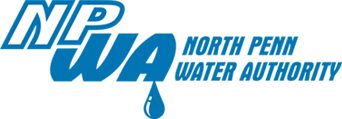Press Releases
North Penn Water Authority Meets Stringent Federal MCLs for PFAS Chemicals
Lansdale, PA. – April 10, 2024– The U.S. Environmental Protection Agency (EPA) has announced new Maximum Contaminant Levels (MCLs) for per- and polyfluoroalkyl substances (PFAS), including perfluorooctanoic acid (PFOA) and perfluorooctane sulfonic acid (PFOS). The MCL for PFOA is set at 4 parts per trillion (ppt), and the MCL for PFOS is set at 4 ppt. North Penn Water Authority and Forest Park Water Treatment Plant meet the MCLs for both PFOA and PFOS.
The new MCLs will go into effect in April of 2029. These MCLs establish the maximum allowable levels of PFOA and PFOS in public drinking water supplies. Water systems will be required to monitor for and treat PFOA, PFOS and other PFAS chemicals to meet the new MCLs. The EPA’s action is part of a broader effort to address PFAS contamination and protect public health.
PFOA and PFOS are two of the most widely studied and prevalent PFAS compounds. Exposure to PFOA and PFOS has been linked to various health effects, including liver damage, thyroid disease, decreased fertility, and certain types of cancer. The EPA has been working to establish MCLs for PFOA and PFOS to ensure the safety of public drinking water supplies.
Following years of scientific testing and evaluation, in February 2021, EPA implemented the national primary drinking water regulation development process for two PFAS contaminants, perfluorooctanoic acid (PFOA) and perfluorooctanesulfonic acid (PFOS). PFAS stands for per- and polyfluoroalkyl substances, a group of thousands of man-made chemical compounds in use since the 1940s to make products resistant to high temperatures, water, and stains.
PFOA and PFOS are two PFAS compounds believed to have adverse health effects at very low concentrations. Because of these properties, PFOA and PFOS were phased out of production by U.S. manufacturers in the mid-2000s. However, PFOA and PFOS can still be imported into the U.S. through consumer goods. They also remain in some drinking water sources due to decades of industrial pollution and consumer product use. The EPA has stated that approximately 80% of a person’s exposure to PFAS comes from consumer goods such as cookware, cosmetics, food wrappings, stain/water-resistant clothing, and carpet and furniture treatments.
The Safe Drinking Water Act (SDWA) defines a water contaminant as any physical, chemical, biological, or radiological substance or matter in water. The law enables the U.S. Environmental Protection Agency (EPA) to set legal limits on the levels of certain contaminants in drinking water.
The SDWA sets a process that the EPA must follow to develop the national primary drinking water standards intended to control the level of contaminants in the nation’s drinking water. The EPA currently has drinking water regulations for more than 90 contaminants.
###

Sitemap
Contact Info
Copyright © 2025 North Penn Water Authority • Site: BCG • Privacy Policy
